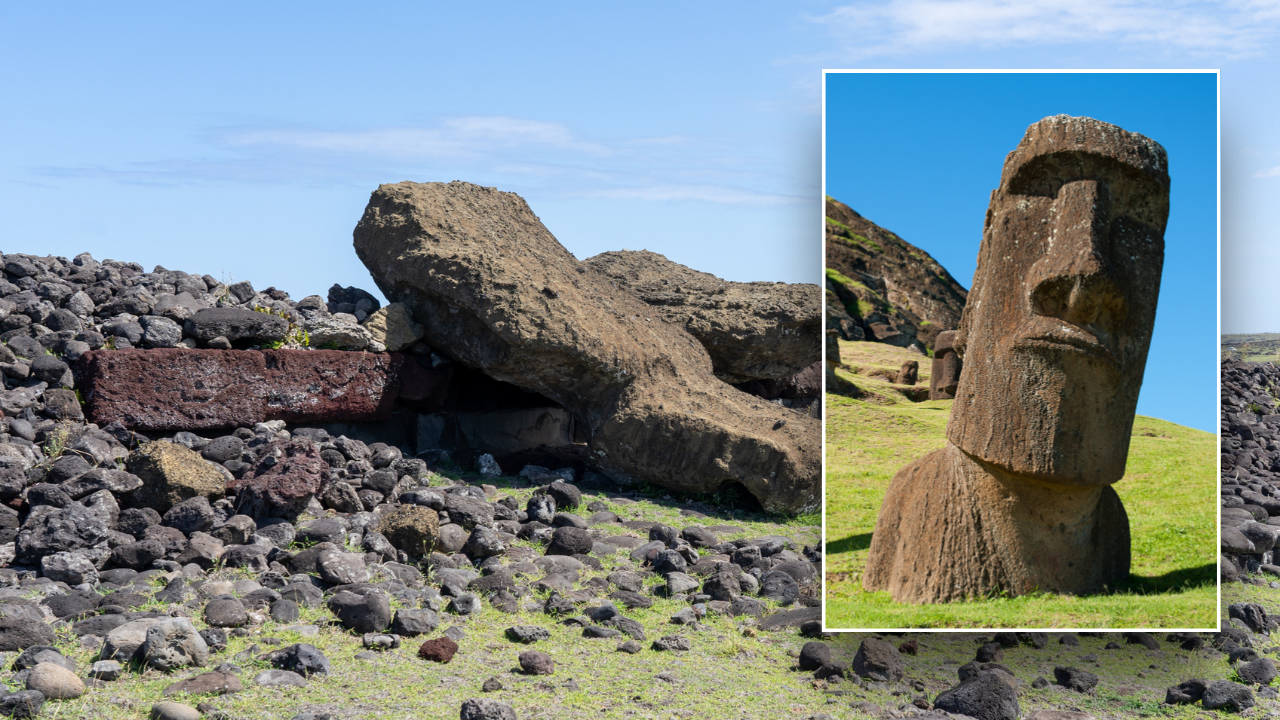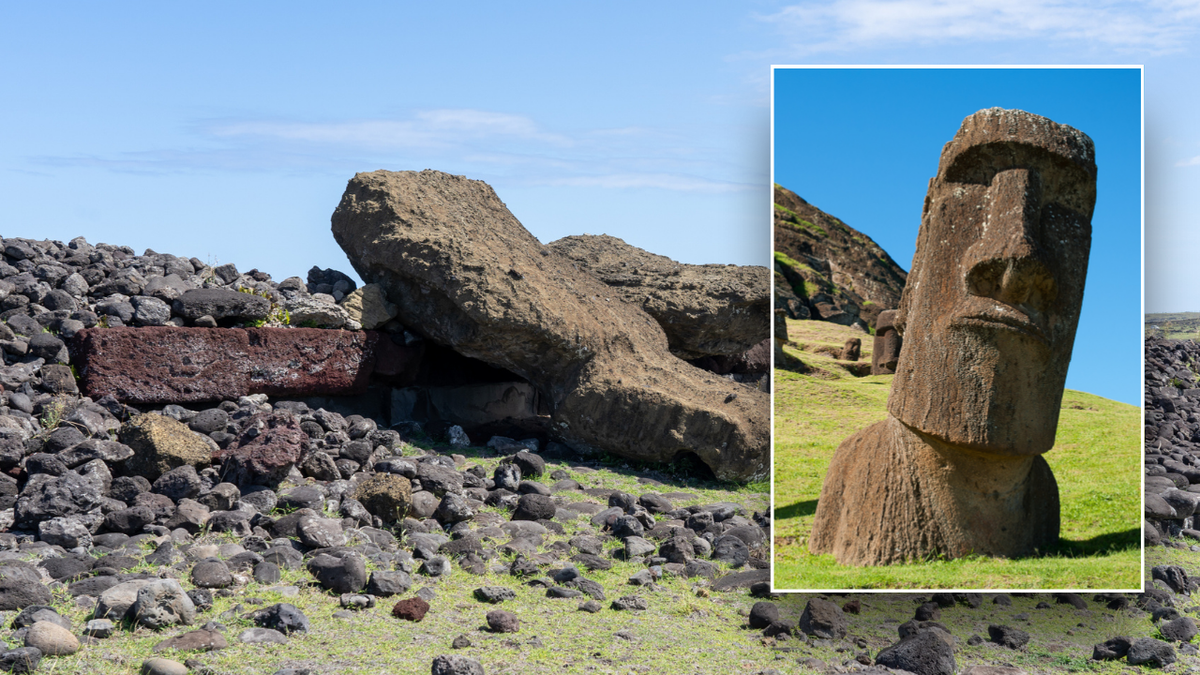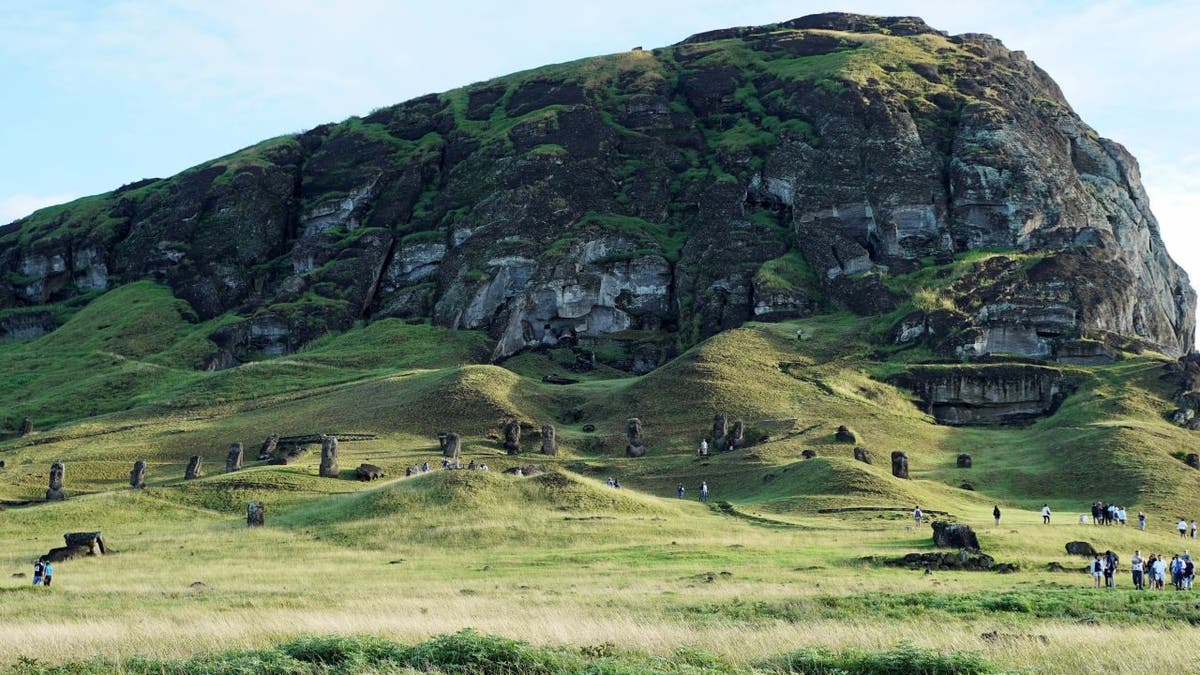
A recently-published study challenges the popular myth that Easter Islanders’ ancient rock gardening practices caused their own downfall.
The journal article, which is titled “Island-wide characterization of agricultural production challenges the demographic collapse hypothesis for Rapa Nui,” was published in Science Advances on Friday. The study explains that Rapa Nui, also known as Easter Island, “is often used as an example of how overexploitation of limited resources resulted in a catastrophic population collapse.”
Hundreds of years ago, farmers on the island – located in the South Pacific – practiced “slash and burn” agriculture by tearing down palm trees and setting them on fire. Farmers would then practice rock gardening to help enrich their soil.
According to a popular myth, islanders were so focused on their rock farming – and erecting hundreds of gigantic stone statues – that their civilization collapsed. When Europeans discovered Easter Island in 1722, the island’s population was allegedly smaller than it once was.
ARCHAEOLOGISTS SURPRISED BY ‘INTRIGUING’ ART DRAWN BY CHRISTIAN PILGRIMS 1,500 YEARS AGO

A recently-published study debunks a popular climate myth about Easter Islanders’ farming practices. (iStock)
“A vital component of this narrative is that the rapid rise and fall of pre-contact Rapanui population growth rates was driven by the construction and overexploitation of once extensive rock gardens,” the article’s abstract section explains. “However, the extent of island-wide rock gardening, while key for understanding food systems and demography, must be better understood.”
Contrary to popular belief that rock gardening was bad for soil, the study says that the practice “enhanced plant productivity by increasing available soil nutrients and maintaining soil moisture.”
WOMAN OUT FOR WALK STUMBLES UPON ONCE-IN-A-DECADE DISCOVERY
“Given the benefits rock gardening has for increasing soil productivity and, thus, plant growth, its practice was a vital part of pre-contact Rapanui subsistence,” the article states. “Nearly half of the Rapanui diet consisted of terrestrial foods.”

This photo taken on April 5, 2024, shows Moai stone statues on Easter Island of Chile. Easter Island, known for its giant stone-carved heads facing out to sea, is located at the southernmost point of the Polynesian Triangle in the South Pacific, and is considered one of the world’s most remote inhabited regions. (Zhu Yubo/Xinhua via Getty Images)
“In this regard, measuring the extent of rock gardens is critical for understanding the island’s pre-contact environmental carrying capacity.”
CLICK HERE TO SIGN UP FOR OUR LIFESTYLE NEWSLETTER
Researchers also used shortwave infrared (SWIR) satellite imagery and machine learning to determine that Easter Island’s population was likely smaller than previously claimed – challenging the myth that the island’s 1722 population was substantially smaller than it was hundreds of years earlier.
“Our estimates suggest that the maximum population supported by rock gardening is not ~17,000 as claimed through Ladefoged et al.’s rock gardening calculations but just 3901 using our measurements,” the study states.
For more Lifestyle articles, visit www.foxnews.com/lifestyle.
Despite research suggesting otherwise, the study’s authors acknowledge that the myth still remains popular outside of academia.

Moais seen on the outer slopes of Rano Raraku volcanic crater. (John Milner/SOPA Images/LightRocket via Getty Images)
“Despite recent archaeological literature debunking ideas about Malthusian population overshoot, the premise that Rapanui society caused its own demise from unsustainable resource use and uncontrolled population increases has been widely popularized,” the article states.
CLICK HERE FOR THE FOX NEWS APP
“While many researchers working on the island have shifted their narratives away from the assumptions of a pre-European collapse, the story remains prominent in disciplines such as ecology, paleoecology, and mathematics.”
